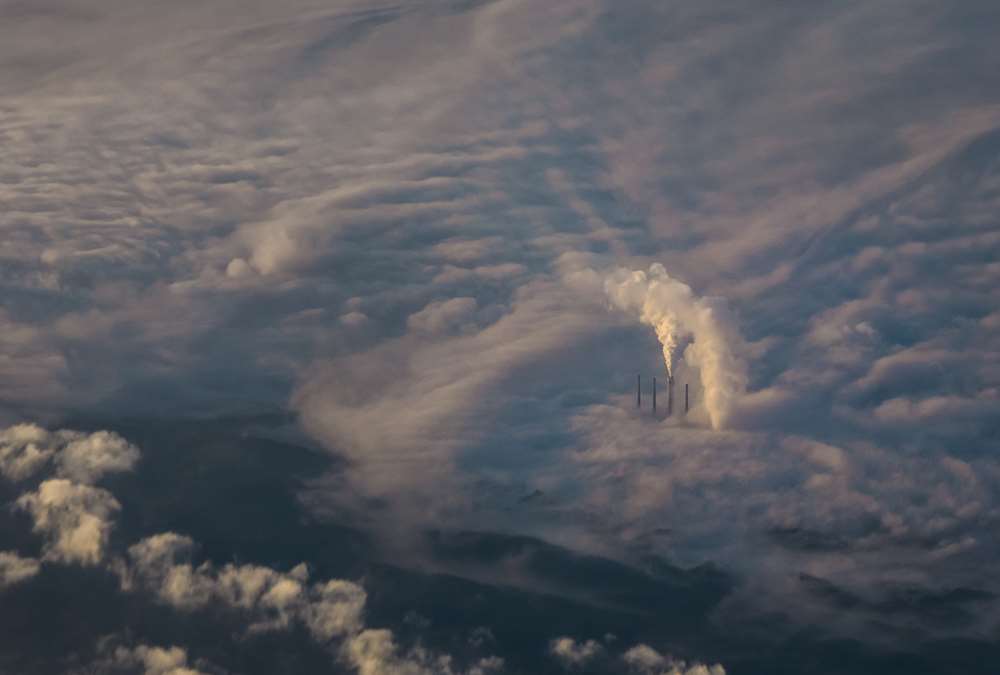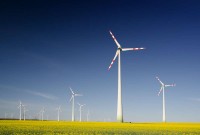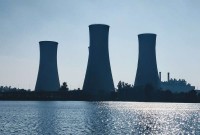- Home
- Business Processes
- Industry Knowledge
- Aerospace Industry
- Automotive Industry
- Banking Domain
- BFSI Industry
- Consumer/ FMCG Industry
- Chemicals Industry
- Engineering & Construction
- Energy Industry
- Education Domain
- Finance Domain
- Hospitality Domain
- Healthcare Industry
- Insurance Domain
- Retail Industry
- Travel and Tourism Domain
- Telecom Industry
- Leadership Skills
- eLearning
- Home
- Domain Knowledge
- Energy Industry
- Overview of Energy
Overview of Energy
The energy is comprised of companies involved in the exploration and development of oil or gas reserves, drilling, and refining and integrated power companies working on renewable and coal energy. This industry locates fuel resources, processes them, and finally involved in the production and sale of energy. Access to affordable energy is fundamental to human development, and economic growth as without electricity and power, human opportunities are significantly constrained.
In this article we will focus on energy sources, to their availability to mankind for utilization and consumption. As a process Energy needs to be generated (converted to electricity), transmitted to a distribution center, distributed to end users and traded among different parties.
What is Energy?
In physics, energy is an indirectly observed quantity. It is often understood as the ability a physical system has to do work on other physical systems. Since work is defined as a force acting through a distance (a length of space), energy is always equivalent to the ability to exert pulls or pushes against the basic forces of nature, along a path of a certain length. Energy (like mass), cannot be created or destroyed.
Distinction between energy and power:
Although in everyday usage the terms energy and power are essentially synonyms, scientists and engineers distinguish between them. In its technical sense, power is not at all the same as energy, but is the rate at which energy is converted (or, equivalently, at which work is performed). Energy Industry or Energy Domain refers to the Power Industry as well.
Transformations of energy:
One form of energy can often be readily transformed into another with the help of a device- for instance, a battery, from chemical energy to electric energy; a dam: gravitational potential energy to kinetic energy of moving water (and the blades of a turbine) and ultimately to electric energy through an electric generator. Similarly, in the case of a chemical explosion, chemical potential energy is transformed to kinetic energy and thermal energy in a very short time. Yet another example is that of a pendulum. At its highest points the kinetic energy is zero and the gravitational potential energy is at maximum. At its lowest point the kinetic energy is at maximum and is equal to the decrease of potential energy. After a useful process has taken place, the total energy is conserved, but the resource itself is not conserved, since a process usually transforms the energy into unusable forms (such as unnecessary or excess heat).
What is the Energy Industry?
Ever since humanity discovered various energy resources available in nature, it has been inventing devices, known as machines that make life more comfortable by using energy resources. Modern society consumes large amounts of fuel, and the energy industry is a crucial part of the infrastructure and maintenance of society in almost all countries.
Energy Industry constitutes of all the industries involved in the production and sale of energy, including fuel extraction, manufacturing, refining, and distribution. The energy industry is the totality of all of the industries involved in the production and sale of energy, including fuel extraction, manufacturing, refining, and distribution. In some industries, the word energy is used as a synonym of energy resources, which refer to substances like fuels, petroleum products, and electricity in general, because a significant portion of the energy contained in these resources can easily be extracted to serve a useful purpose.
Sectors of the Energy Industry:
Energy development is an effort to provide sufficient energy sources for modern societies as they are dependent on external energy sources. As energy allows people to live under otherwise unfavorable climatic conditions through the use of heating, ventilation, and air conditioning.
The energy sector comprises the major energy demand sectors (industry, residential and commercial, transport, and agriculture) and the energy supply sector (resource extraction, conversion, and delivery of energy products). The energy industry is very broad, but it can be divided into five primary categories. The following paragraph discusses some common sectors of the energy industry.
1. Fossil Fuel Industries
These industries include petroleum industries (oil companies, petroleum refiners, fuel transport and end-user sales at gas stations) coal industries (extraction and processing) and the natural gas industries (natural gas extraction, and coal gas manufacture, as well as distribution and sales).
Fossil fuels sources burn coal or hydrocarbon fuels, which are the remains of the decomposition of plants and animals. There are three main types of fossil fuels: coal, petroleum, and natural gas. Another fossil fuel, liquefied petroleum gas (LPG), is principally derived from the production of natural gas. Heat from burning fossil fuel is used either directly for space heating and process heating, or converted to mechanical energy for vehicles, industrial processes, or electrical power generation. The efforts of the petroleum and gas industries to prolong fossil fuel resources may buy more time for the development of alternative sources, such as solar, wind, and biofuels.
2. The Electrical Power Industry
This includes electricity generation, electric power distribution, and sales. Even though the era of electricity and automotive transportation has been around only for little more than a century, it has almost become a necessity of life.
Electricity Transmission:
Electricity grids are the networks used to transmit and distribute power from the production source to the end-user, when the two may be hundreds of kilometers away. Sources include electrical generation plants such as a nuclear reactor, coal-burning power plant, etc. A combination of sub-stations, transformers, towers, cables, and piping are used to maintain a constant flow of electricity.
3. The Nuclear Power Industry
Nuclear power is the use of sustained nuclear fission to generate heat and electricity. Nuclear power plants provide about 6% of the world's energy and 13–14% of the world's electricity, with the U.S., France, and Japan together accounting for about 50% of nuclear-generated electricity. In 2007, the IAEA reported there were 439 nuclear power reactors in operation in the world, operating in 31 countries.
Nuclear power plant development plans have mostly been put on hold for further debate, however, following major nuclear accidents at power plants such as Chernobyl, Russia, in 1986, and the radiation leaks that occurred at Fukushima in Japan after the tsunami in 2011.
4. The Renewable Energy Industry
This industry comprises of alternative energy and sustainable energy companies. This sector includes those involved in hydroelectric power, wind power, and solar power generation, and the manufacture, distribution and sale of alternative fuels.
Renewable energy is energy which comes from natural resources such as sunlight, wind, rain, tides, and geothermal heat, which are renewable (naturally replenished). Renewable energy is an alternative to fossil fuels and was commonly called alternative energy in the 1970s and 1980s. Wind, solar, and biomass are three renewable energy sources.
Tidal power can be extracted from Moon-gravity-powered tides by locating a water turbine in a tidal current, or by building impoundment pond dams that admit-or-release water through a turbine. The turbine can turn an electrical generator, or a gas compressor, that can then store energy until needed. Coastal tides are a source of clean, free, renewable, and sustainable energy. The desire to develop renewable, clean energy sources will continue to play a major role in the energy industry.
5. Traditional Energy Industry
This is the traditional industry based on the collection and distribution of firewood, the use of which, for cooking and heating, is particularly common in poorer countries.
Biomass production involves using garbage or other renewable resources such as corn or other vegetation to generate electricity. When garbage decomposes, the methane produced is captured in pipes and later burned to produce electricity. Vegetation and wood can be burned directly to generate energy, like fossil fuels, or processed to form alcohols.
Related Links
You May Also Like
-
Most of the energy we use today is being obtained from coal and petroleum. There are some sources of energy, which can be used repeatedly without exhausting them, such as, energy from the sun, energy from a water-fall, wind energy, tidal energy. This industry comprises of alternative energy and sustainable energy companies, including those involved in hydroelectric power, wind power, and solar power generation, and the manufacture, distribution, and sale of alternative fuels.
-
The history of human culture can be viewed as the progressive development of new energy sources. Developments in the energy industry have resulted in unparalleled transformations of society. It is because of the availability of energy sources that humans have been able to increase comfort, longevity, and affluence, as well as their population apart from unprecedented growth. Each energy fuel alternative has also impacted different combinations of economic, political, technological, social, and environmental attributes.
-
These industries include petroleum industries (oil companies, petroleum refiners, fuel transport and end-user sales at gas stations) coal industries (extraction and processing), and the natural gas industries (natural gas extraction, and coal gas manufacture, as well as distribution and sales). Most of the energy we use today is being obtained from coal and petroleum. We also have nuclear power plants. But these energy sources are limited as only finite quantities of coal; petroleum and gas exist underground or in oceans.
-
This is the traditional industry based on the collection and distribution of firewood, the use of which, for cooking and heating, is particularly common in poorer countries. People have needed energy in some form for their everyday lives for hundreds of years. Primitive man (about 1 million years B.C.) used fire to cook food and over the period of human development. The energy industry was probably born the day when our ancient ancestors first discovered that they could keep themselves warm and cook food with fire.
-
The modern electric power industry covers the generation, transmission, distribution, and sale of electric power to the general public and industry. The commercial distribution of electric power started in 1882 when electricity was produced for electric lighting. In the 1880s and 1890s, growing economic and safety concerns lead to the regulation of the industry. What was once an expensive novelty limited to the most densely populated areas, reliable and economical electric power has become an essential aspect for normal operation of all elements of developed economies!
-
Nuclear power is the use of sustained nuclear fission to generate heat and electricity. Nuclear power plants provide about 6% of the world's energy and 13–14% of the world's electricity, with the U.S., France, and Japan together accounting for about 50% of nuclear-generated electricity. In 2007, the IAEA reported there were 439 nuclear power reactors in operation in the world, operating in 31 countries.
-
The energy is comprised of companies involved in the exploration and development of oil or gas reserves, drilling, and refining and integrated power companies working on renewable and coal energy. This industry locates fuel resources, processes them, and finally involved in the production and sale of energy. Access to affordable energy is fundamental to human development, and economic growth as without electricity and power, human opportunities are significantly constrained.
-
Energy is essential to life and the key to human progress. Energy is the common link between the living and non-living realms of the universe, and thus provides an organizing intellectual theme for diverse disciplines. Energy growth is directly linked to well-being and prosperity across the globe. Meeting the growing demand for energy in a safe and environmentally responsible manner is a key challenge.
-
The energy industry is going through the biggest transformation in history. The impact of energy production and consumption on the environment is varied and mankind has started understanding the importance of improving energy efficiency and ensuring energy security for all. The current trend is to explore sustainable energy options that can provide power to future generations.
Explore Our Free Training Articles or
Sign Up to Start With Our eLearning Courses

About Us
Learning
© 2023 TechnoFunc, All Rights Reserved









